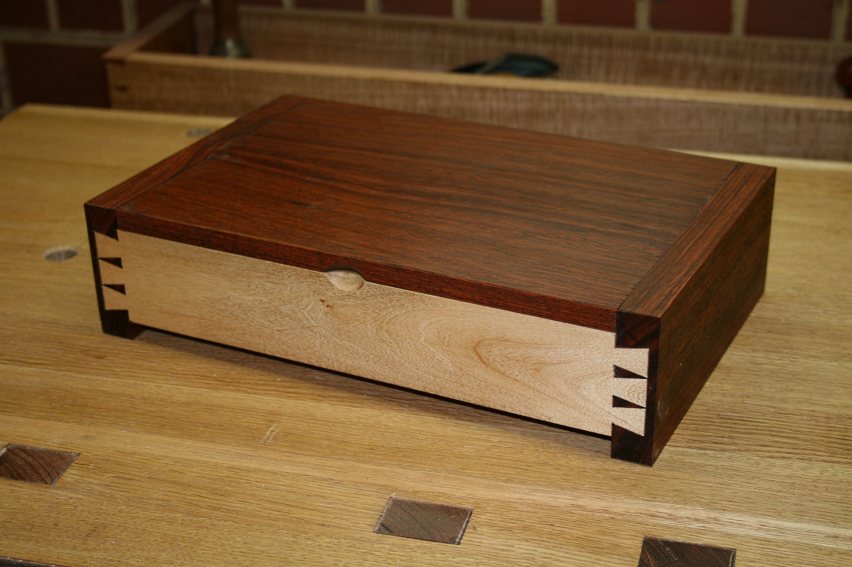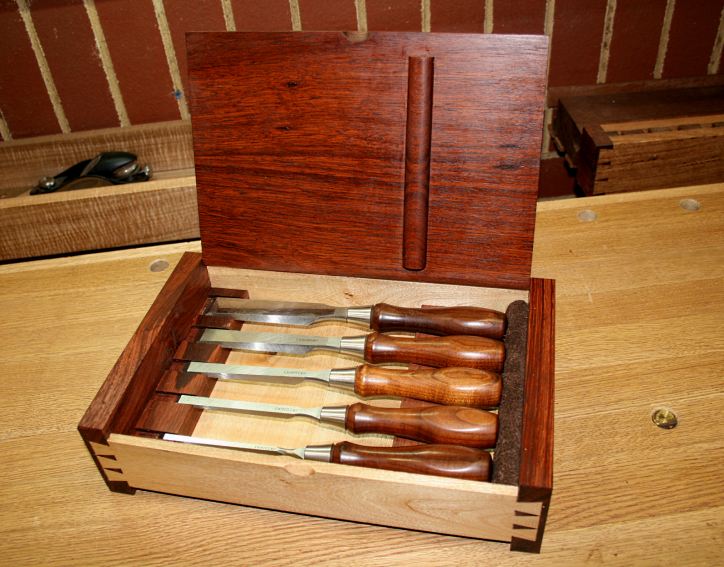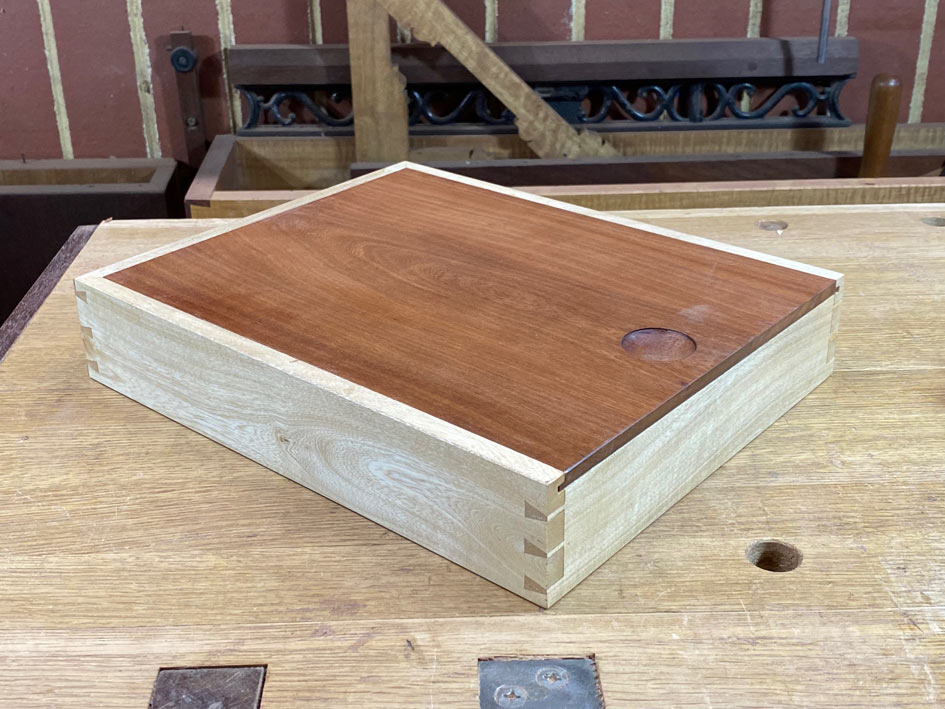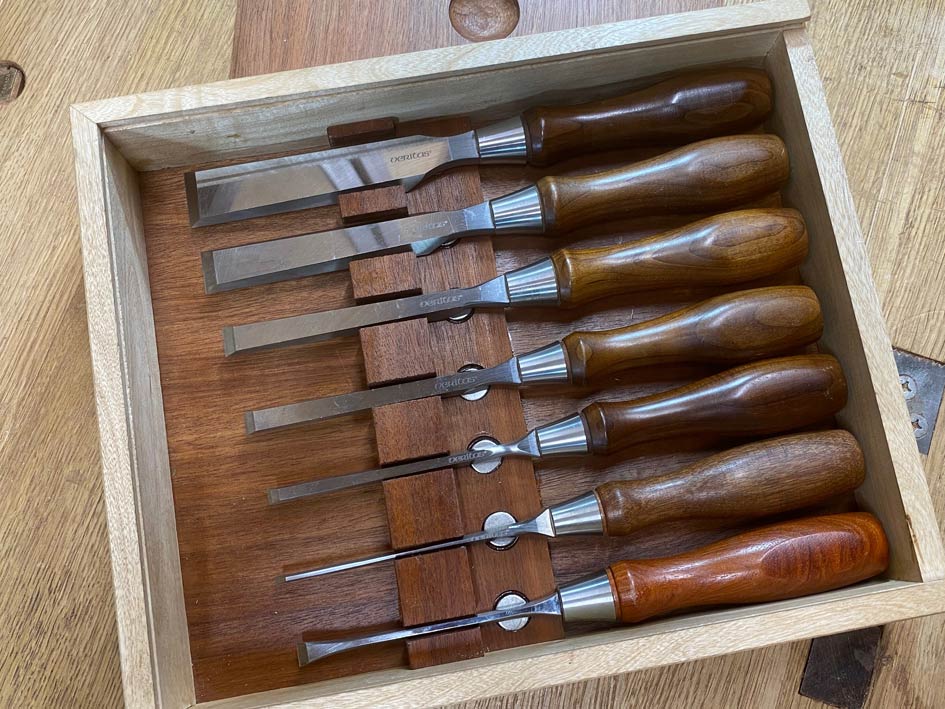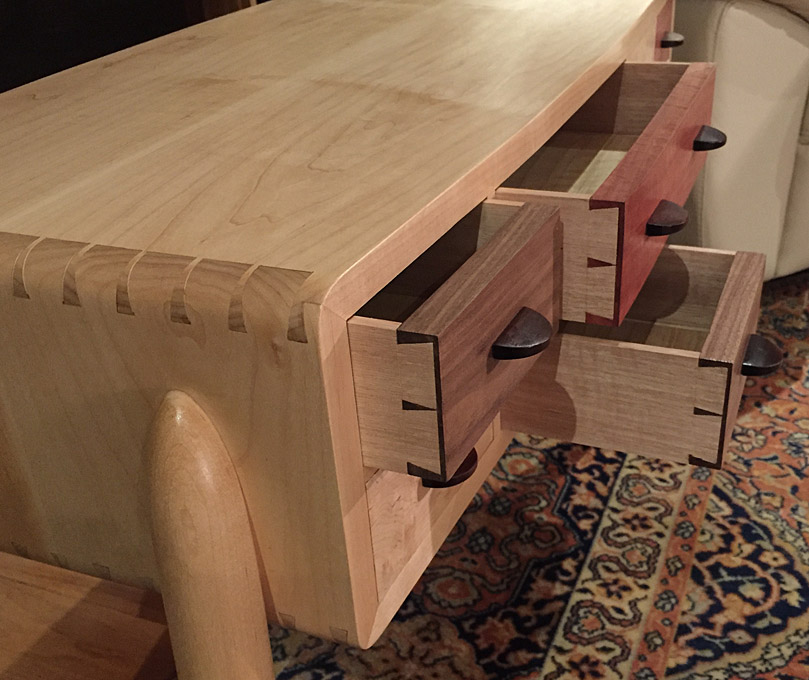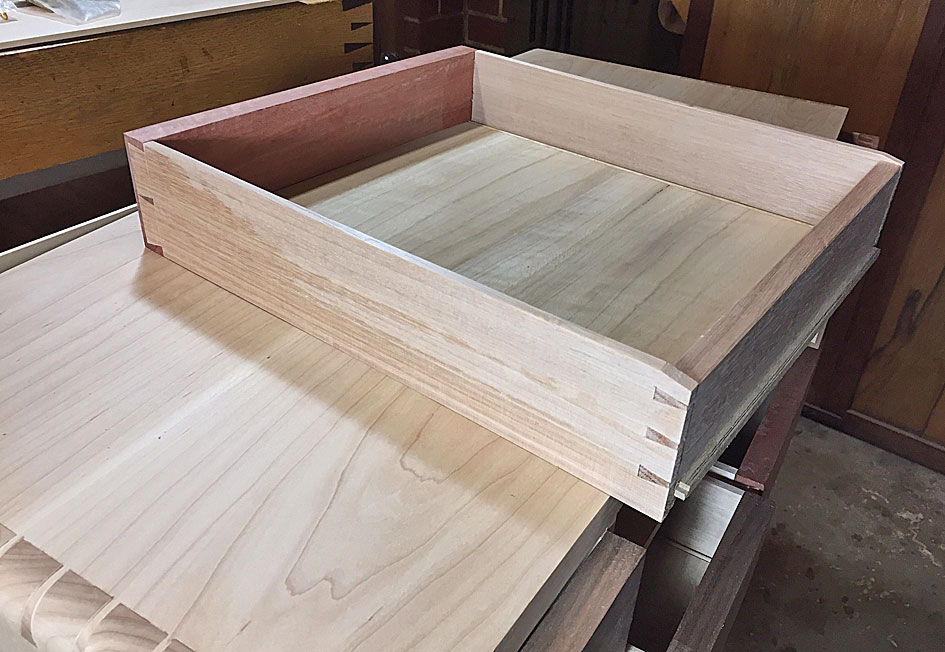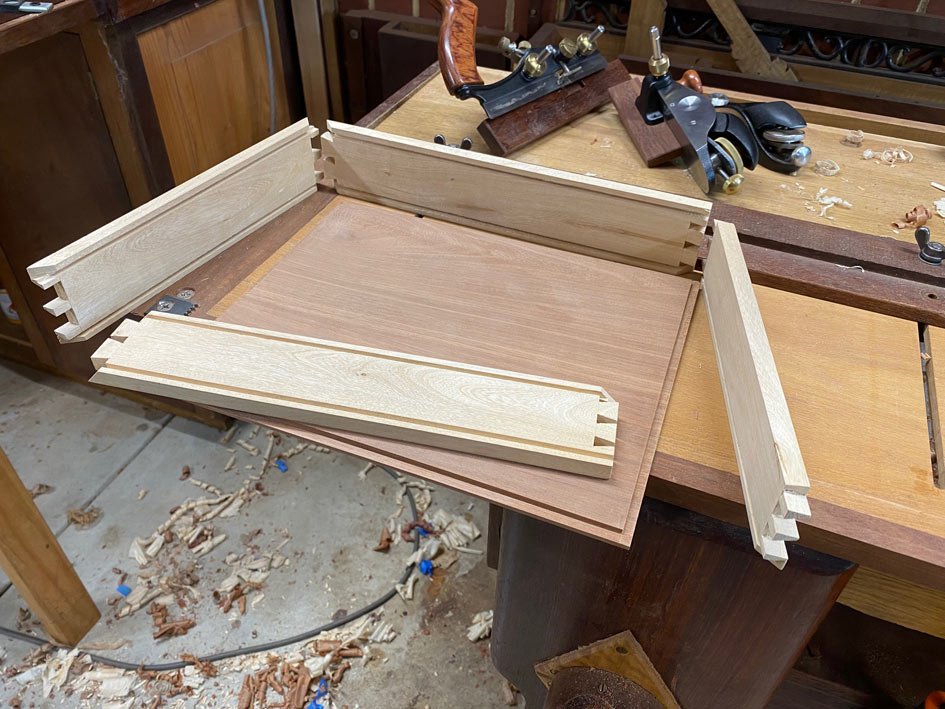I recently posted a picture of a travel box I made for a set of chisels I take to demonstrate at wood shows and joinery workshops. It replaced this box, which was originally made to house 5 chisels, and was now too small for the 7 chisels that need to be stored.
Original box ...
As an aside, the narrow tips are harder to make as the sockets are more fragile when clearing the waste from the corners. In terms of overall strength, narrow dovetails (often called "London" dovetails) are no weaker than wider dovetails. I think that they just look more elegant.
Anyway, the other reason I wanted to make a new chisel box was because I thought that this one, made 10 years ago, was a little too "in your face". I was planning to be at a workshop (this past Saturday), and wanted the new box for then. The new chisel box is actually many times more complex to make. However, only experienced dovetailers will know this.

This is the new box ...
Why is this box so much more difficult?
The dovetails in the first box look impressive because they are half blinds and because they are pointy "London" style. But they are still just half blind dovetails and, because the tail is hidden inside the socket, I described these as 1 Dimensional.
Now take the through dovetail. It is open on two sides. Both sides are open for scrutiny. Therefor I would refer to these as joinery in 2 Dimensions ...
The new box has mitred through dovetails, which are used to hide the grooves for the bottom and the sliding lid. These mitres add a big jump in complexity - a third dimension. Each of these sides must come together at the same time, otherwise there will be gaps at the side and front. In other words, joinery in 3 Dimensions.
This is a model of mitred through dovetails ..
This is the new box before glue up ...
Rob Cosman was asked to demonstrate a mitred through dovetail. He declined, saying that he had never made one. I understand and accept this. It is not a joint to teach a beginner.
There are other dovetails, but for another time.
Regards from Perth
Derek






































